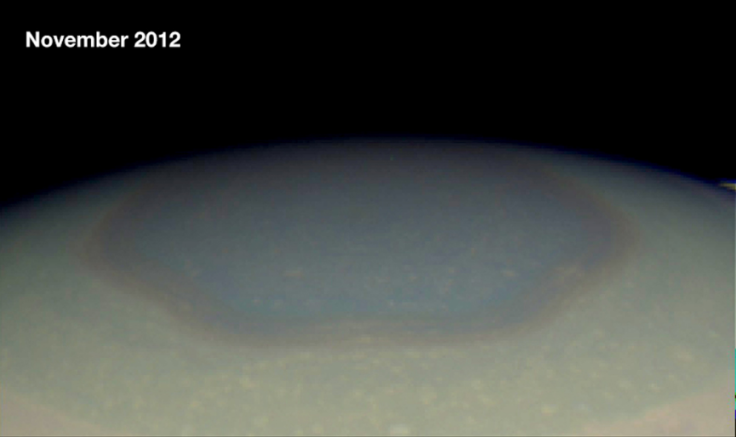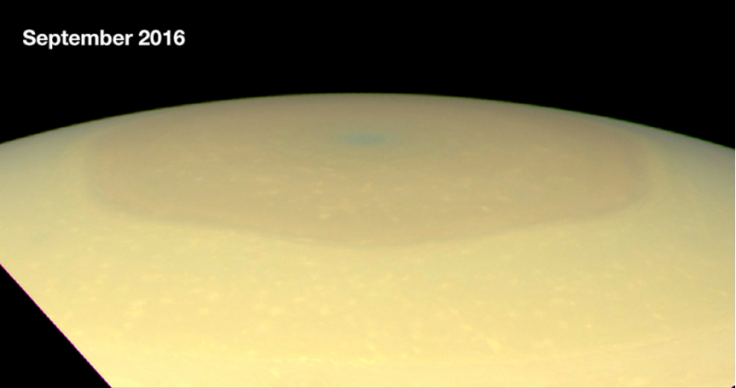Strange change in colours on Saturn investigated by Nasa
A camera on Cassini spacecraft revealed a change in colour on the northern polar region of the planet which occurred in four years.
Two pictures taken in the space of four years by Nasa's Cassini spacecraft have revealed that Saturn's north polar region has changed colour. In 2012, the area inside the north-polar hexagon on Saturn was a darker, blue-grey shade. It is now a brighter golden colour.
The Cassini mission is a joint project between Nasa, ESA (the European Space Agency) and the Italian Space Agency. It is the first in-depth, up-close study of Saturn and its system of rings and moons, which started in 1997 when the orbiter and an ESA probe were launched into space. Seven years later, they reached Saturn, and the Cassini spacecraft became the first to orbit Saturn. For more than a decade now, scientists have uncovered a lot about the sixth planet from the Sun and the mission will come to an end next year.

The scientists are now investigating the strange change in appearance of Saturn's northern polar region and have come up with a range of hypothesis. They believe that changing colours are a result of changes in seasons on the planet and the amount of sunlight falling on the poles. This has an impact on the production of suspended particles – known as aerosols – in the atmosphere.
The north pole will experience summer solstice in May 2017 and the gold colour may be due to an increased production of aerosols in the atmosphere as the time of the year approaches.

"The hexagon might act as a barrier that prevents haze particles produced outside it from entering. During the polar winter night between November 1995 and August 2009, Saturn's north polar atmosphere became clear of aerosols produced by photochemical reactions – reactions involving sunlight and the atmosphere. Since the planet experienced equinox in August 2009, the polar atmosphere has been basking in continuous sunshine, and aerosols are being produced inside of the hexagon, around the north pole, making the polar atmosphere appear hazy today," Nasa scientists say.
The other hypothesis is that changes in atmospheric circulation could also be responsible for the change in colour – for instance, winds in the polar regions may be influenced by seasonally shifting patterns of solar heat and this could have an impact on the appearance of Saturn's northern polar region.
© Copyright IBTimes 2025. All rights reserved.






















